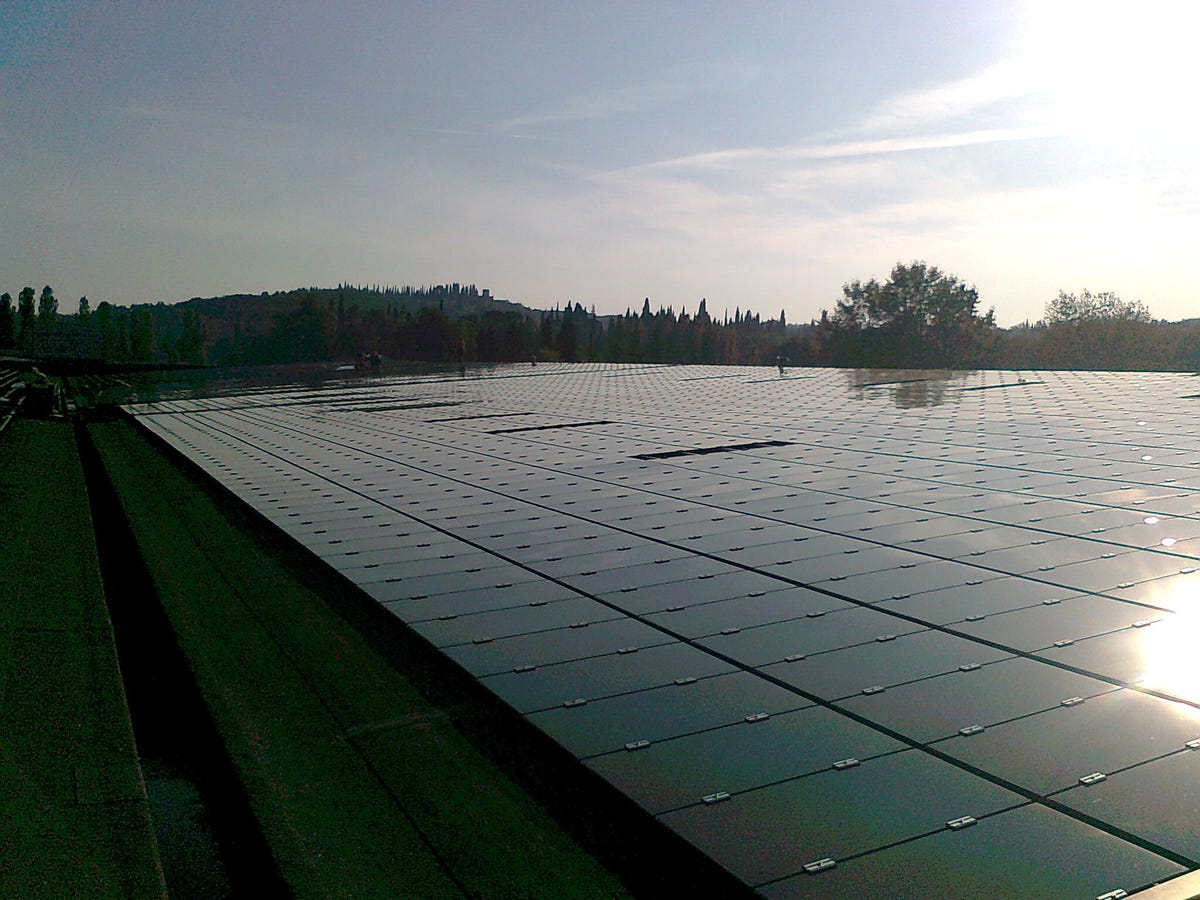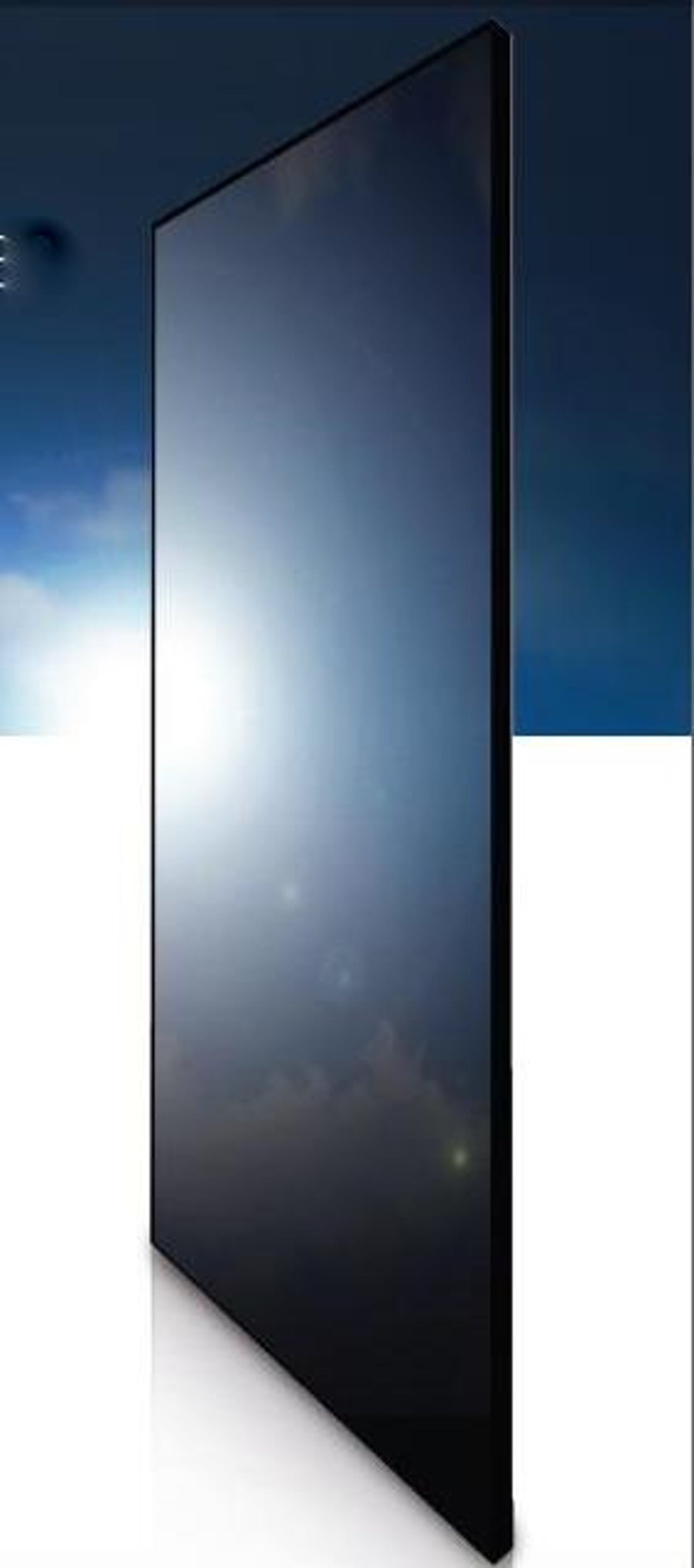Manufacturing new solar tech at scale (photos)
Many companies have created new solar photovoltaic technology to lower the cost of solar. How are they bringing new manufacturing plants online?

Abound Cad Tel panels
The dozens of solar technology start-ups in the U.S. are taking different routes to bringing their products to market.
Abound Solar last week finalized a $400 million Department of Energy loan guarantee, which is being combined with $110 million in private equity. The money will allow the company to expand its current manufacturing facility in Longmont, Colo., and build a very large plant in Indiana in the next two years.
The company's manufacturing technology, which comes out of Colorado State University, coats thin films of photovoltaic material on two sheets of glass. The cadmium telluride thin-film solar panels are made in about a half hour, quicker than traditional thin-film processes, according to the company.
See related story: Why solar start-ups need Uncle Sam.
Solyndra factory
Fremont, Calif.-based Solyndra is the other solar photovoltaic company to get a large loan guaranteed by the Department of Energy. With the $535 million loan, the company built a second production facility that is a highly automated process for making solar collectors using thin films coated onto glass tubes. The panels are designed for installation on flat commercial rooftops.
In the face of intense price competition from silicon solar panels, Solyndra had to close down its first manufacturing plant. The company also scratched its plans to go public and raise money that way, saying that market conditions were not good. Instead, it raised additional equity from existing venture capitalists and private equity investors.
Miasole in California
Miasole is another thin-film solar panel manufacturer that has started producing panels using cells made from copper, indium, gallium, and selenide (CIGS). It says that its custom manufacturing process yields low costs and high efficiency. The company was able to finance its first manufacturing facility through private sources of capital, such as venture capitalists, private equity, and hedge funds. The Silicon Valley company in August signed a supply agreement with Chinese renewable energy project developer Juwi Solar.

Stion
Stion, another Silicon Valley thin-film solar company, is taking a different route to getting its first products to market. It took an investment from Taiwan Semiconductor Manufacturing Corporation (TSMC), which will manufacture the first generation of the company's panels. The funding means that the company does not need build its own manufacturing facility, saving it money. It also allows it to work on the second and third generation of their solar panel technology, including a "tandem solar panel" that will stack two layers of solar cell tuned to capture different wavelengths of light.
SoloPower solar collector
SoloPower is another thin-film solar company founded in Silicon Valley that is awaiting word from the Department of Energy on a loan guarantee. The company is seeking a loan, private money, and incentives from municipal government to build a plant able to turn out 100 megawatts' worth of solar collectors a year.
The company's product is somewhat unique in that the solar cells can be placed onto a flexible backing. That allows for quick installation, particularly on flat commercial rooftops.
1366 Technologies' texturing machine
Rather than develop machines to make thin-film solar cells, Lexington, Mass.-based 1366 Technologies is designing equipment for the dominant solar cell technology--polycrystalline silicon. This machine, marketed to silicon solar manufacturers, creates a textured surface on a silicon wafer (gray square on left). That surface cuts down on the reflectivity of the cell and increases the amount of light a cell can capture.
The company was the only solar photovoltaic company to receive an award from the Department of Energy's ARPA-E grant program. Once it finishes work on its technology, it expects to build a 100-megawatt-per-year facility with the aid of state incentives.

